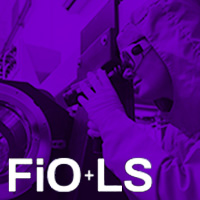Abstract
Any real system, no matter how well isolated, unavoidably interacts with the environment. This interaction makes the evolution of a quantum system nonunitary and destroys the coherence of quantum superpositions. This process, known as decoherence, is widely regarded as the most important and fundamental obstacle to the practical realization of quantum information processing. On the other hand, the objectives of quantum control are predicated on the ability to manipulate the system coherently over a period of time. Quantum control has been applied successfully to several experimental systems and coupling such a controlled system to an environment makes the study of coherence loss possible. The standard model of decoherence is formulated in terms of a system, defined by the observables that can be measured, and a reservoir, de¯ned by those degrees of freedom that are not accessed by observation. The vibrational and rotational degree of freedom of diatomic molecules form an experimental model of such a system and bath 1. The nature of the ro-vibrational coupling does not allow a Decoherence Free Subspace, instead we try to identify a Decoherence Resistant Subspace using closed loop control. We set up a learning control loop experiment to monitor the coherence in a vibrational wavepacket, consisting of about 6 vibrational states of the A(1Σ+g ) electronic state, excited by a shaped, ultrashort optical pulse, and then to determine the pulse shape that yielded the longest coherence lifetime. The coherence of the vibrational wavepacket was monitored by measuring the fluorescence quantum beats from the outer turning point of the wave packet's trajectory. The closed loop controller altered the shape of the driving optical pulse to maximize the the depth of modulation of the quantum beats at a prescribed time after excitation, within the constraints of the laser system. The outcome of this closed loop control experiment shows an improvement of the beat decay constant of about 60%, as shown in Fig. (1), a result which occurs for several di®erent pulse shapes. Our experiments show that a number of interesting decoherence-resistant excitations exist. The nature of the dephasing was examined theoretically. Using measured optical pulse shapes, we simulated numerically the molecular wavepacket in the limit of perturbation theory. The experiment and simulations show that there are di®erent mechanisms contributing to the decoherence resistant excitation. The shaped pulse reduces the °uctuations in the wave packet spatial extent, which in turn changes the system reservoir coupling. Other components of the optimal pulse are a sequence of pulses that creates constructive interference of the vibrational wavepacket at the desired time, and chirp which compensates for the anharmonicity of the adiabatic potential. The experimental results show general agreement with numerical simulations. We conclude that wavepackets resistant to dephasing do exist,and that learning algorithms provide an effcient means for finding them.
© 2005 Optical Society of America
PDF ArticleMore Like This
M. P. A. Branderhorst, P. Londero, P. Wasylczyk, I. A. Walmsley, C. Brif, H. Rabitz, and R. L. Kosut
JTuB2 Conference on Lasers and Electro-Optics (CLEO:S&I) 2006
Ian Walmsley, Pablo Londero, Sascha Wallentowitz, Leon Waxer, and Czeslaw Radzewicz
FB4 International Conference on Ultrafast Phenomena (UP) 2002
R.S. Minns, M.R. Kutteruf, H. Zaidi, L. Ko, and R.R. Jones
LTuB3 Laser Science (LS) 2005

